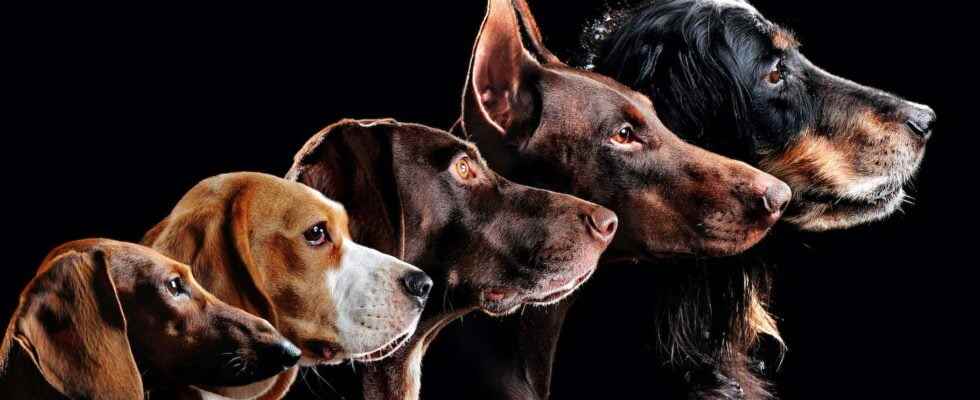Short legs. Big ears. A spotted coat. The breed of a dog can be recognized by a few characteristic traits. The result of crosses that researchers are now pointing to. The inbreeding rate among our four-legged friends is indeed reaching new heights today. And it is dangerous for their health.
You will also be interested
[EN VIDÉO] These 10 things you should know about your dog He has been following us for tens of thousands of years… like a little dog. But if sometimes we feel like we know everything about our best friend, researchers have not finished telling us.
From the same animal, the wolf, humans have created, over the millennia, more than 300 breeds of dogs with different characteristics. To mark these differences – a little more the aspect physical than the aptitudes of function -, they did not hesitate to cross the families between them. Thus, today, University of California researchers (United States) reveal that the majority of canine breeds are highly inbred.
Dog breeds are often recognized for distinctive traits – the short legs of a dachshund, wrinkled face of a pug, spotted coat of a Dalmatian. Unfortunately, the genetics that give various breeds their attributes are often the result of inbreeding. https://t.co/6RGrF7lhGn
– UC Davis Veterinary Medicine (@ucdavisvetmed) December 2, 2021
They studied the genome of nearly 50,000 dogs of no less than 227 distinct breeds. To note a consanguinity average of 25%. The equivalent, for us, of sharing equipment genetic between a brother and a sister. Much more, therefore, than what would be considered safe in humans. Or even in populations ofwild animals.
Preserving the genetic diversity of dogs
What worries researchers is that such consanguinity has consequences for the health of dogs. Because, remember that, in humans, inbreeding levels of only 3 to 6% are already associated with prevalence increased of several diseases. In our four-legged friends, the study notes that the high inbreeding observed leads to a marked increase in the appearance of diseases.
If it seems difficult to turn back today, the researchers recommend taking some measures to preserve a certain genetic diversity – and with it, health – in dog populations. Among them, strict management of breeding populations through education of breeders and monitoring of inbreeding levels allowed by direct genotyping technologies. The effectiveness of the idea of crossing races among themselves remains to be determined.
Interested in what you just read?
.
fs11
